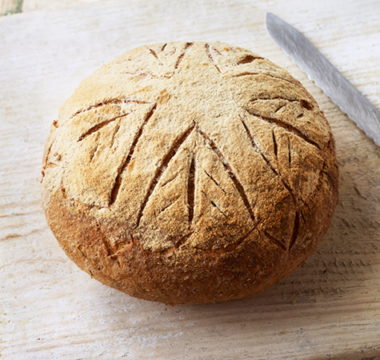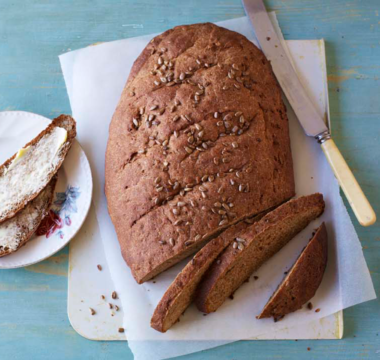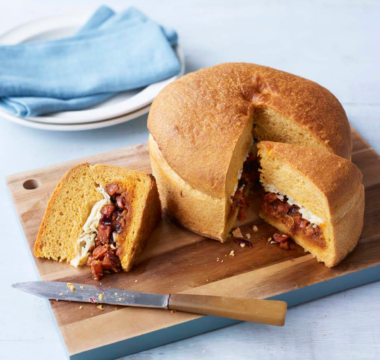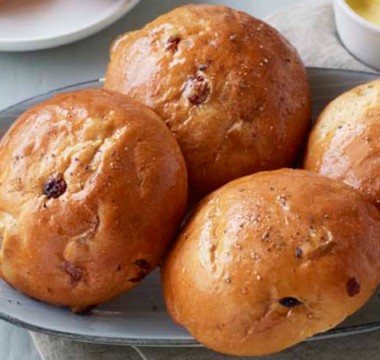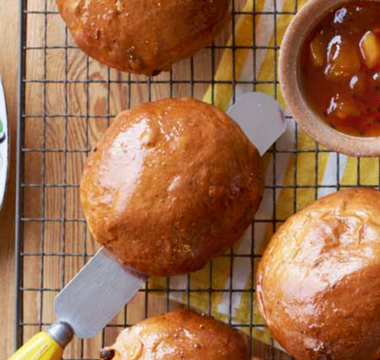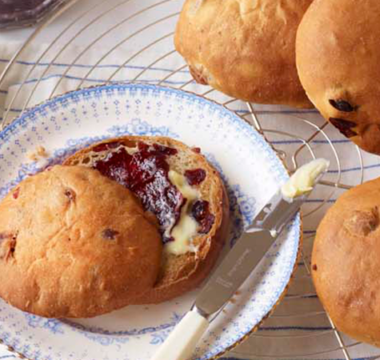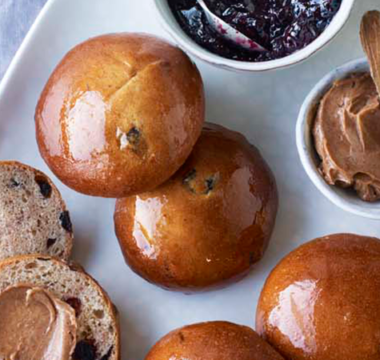This is a classic British crusty loaf. It’s easy to make and suitable for everything from dunking in bowls of hearty soup to serving up with cheese and pickles in a homemade Ploughman’s.
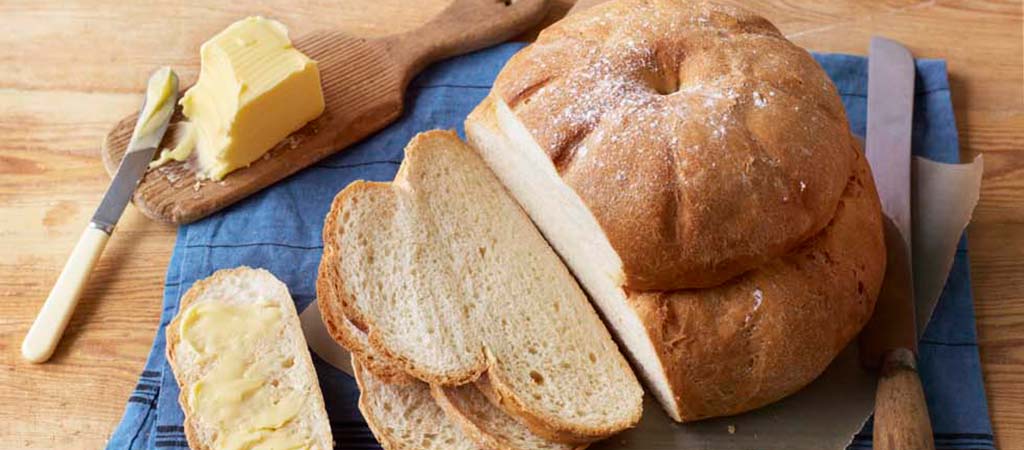
- Ingredients
- Method
Method
Step 1
Tip the flour into a large bowl and add the yeast to one side and the salt to the other. Add the lard and pour in about 225–250ml of water. Mix using one hand, then add a further 75–100ml of water (you may not need it all, or you may need a little more), a little at a time, until all the flour is incorporated and the dough is soft but not soggy.
Step 2
Tip the dough onto a lightly floured work surface and knead for 5–10 minutes, until it is smooth and silky.
Step 3
Place the dough in a lightly oiled bowl, cover with a clean tea towel and leave to rise until doubled in size. This will take at least 1 hour and can take 2–3 hours, or longer, depending on the room temperature.
Step 4
Tip the dough onto a lightly floured surface and fold it inwards repeatedly to knock out the air and ensure that it rises upwards, rather than outwards. This is especially important in a freestanding loaf without a tin to support it.
Step 5
Tear off one third of the dough and set aside. Shape the larger piece into a ball by first flattening the dough into a rough rectangle, then rolling it into a thick oblong. Turn the dough so that the longer edge is running away from you and flatten it slightly. Now fold in the two ends to the centre and press them down, so you end up with a chunky, squarish shape. Turn the dough over, so that the join is underneath.
Step 6
With your palms turned upwards, put your hands on each side, slightly under the dough. Move the cob around, tucking the dough neatly under itself as it turns. You are gently forcing the sides of the dough down and underneath, to create a smooth, taut top and a rough underside. Avoid using too much extra flour during shaping. Place the ball of dough on the prepared baking tray.
Step 7
Repeat the rolling and shaping for the smaller piece of dough, then place the smaller ball on top of the larger ball. Flatten the top slightly, then dust your middle finger and forefinger with flour and push them through the centre of the loaf all the way to the bottom. Use a sharp knife to make 8 slashes in the surface of both the top and larger lower part of the loaf.
Step 8
Place the tray inside a large, clean plastic bag and leave to prove for 1 hour, or until well risen, and springy when prodded. Meanwhile, heat the oven to 230°C/210°C fan/450°F/Gas 8 and put a roasting tray in the bottom of the oven to heat up.
Step 9
Remove the risen loaf from the bag and dust with flour. Fill the roasting tray with cold water to create steam and put the bread in the oven. Bake for 15 minutes, then lower the oven to 190°C/170°C fan/375°F/Gas 5 and bake for a further 20–25 minutes, until crusty, golden brown and the base sounds hollow when tapped. (If not, put it back into the oven for another 5 minutes.)
Step 10
Transfer the baked loaf to a wire rack to cool.


